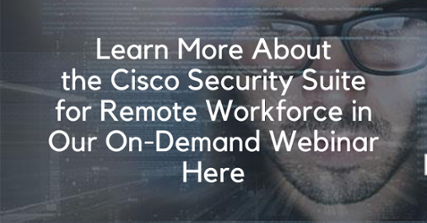 If not for teleworking, the novel coronavirus would have had more devastating economic effects than it has. Although the concept was already alive and growing steadily, the pandemic forced several organizations to adopt it as a survival mechanism. While a hybrid workforce has many advantages, it also presents various problems, especially for the IT department.
If not for teleworking, the novel coronavirus would have had more devastating economic effects than it has. Although the concept was already alive and growing steadily, the pandemic forced several organizations to adopt it as a survival mechanism. While a hybrid workforce has many advantages, it also presents various problems, especially for the IT department.
5 Common IT Issues with Hybrid Workforces
Remote workers have flexible schedules, avoid commuting, and can choose to work from their ideal locations. In-office workers on the other hand enjoy closer professional and personal relationships with the management and fellow employees. Although both parts of the hybrid workforce experience certain benefits, the situation also results in imbalances. Technological problems include: 
1). Poor remote tech support
Most companies were not completely prepared for the switch to remote work. As a result, IT departments have seen a huge rise in the number of problems reported by remote workers. They include issues with VPN setup and use, forgotten passwords, internet connectivity problems, and risky online actions by employees. Some of them try to solve the problems on their own, with mixed results. Your tech experts cannot respond to these issues as fast as they would in an office.
2). Inadequate workflow solutions
Although remote work offers your employees more flexibility, they still need to stick to schedules and meet deadlines. It can be hard to do so with a team that's spread across various geographical locations. These workflow issues are caused by buggy scheduling software, the inability to properly summon your team for meetings, and failure to boost employee morale. A poor feedback system also means you can't collect valuable insights on how to make the situation better.
3). Lack of essential communication and collaboration tools
The teleworking phenomenon forced most employees to adapt to using tools that they'd never used before. They include software such as Zoom, Slack, Trello, Basecamp, TeamViewer, and CoSchedule. They also had to get used to operating devices such as routers, webcams, and Bluetooth-enabled peripherals. If your company doesn't have a clear strategy on standard communication and collaboration solutions for the entire workforce, it might affect teamwork and productivity.
4). Inadequate cloud-based solutions
You could describe the cloud as the backbone of your hybrid workforce. It helps in securing sensitive data, backs up important documents, allows employee mobility, and enables the seamless operation of collaboration tools. Other benefits include scalability and facilitating compliance with tech-specific regulations. If your cloud service provider can't guarantee high-quality solutions, your remote workforce will suffer.
5). Cybersecurity threats
It's easier to secure company resources with on-site employees. You can never tell for sure whether your remote workers have secure home networks and devices. They might also share their computers and the internet with other people who might have ulterior motives. Without state-of-the-art antivirus, VPNs, and firewalls, it's easier for hackers to first access their devices while aiming for your corporate network. Some organizations also maintain legacy systems that might be incompatible with the latest remote working solutions, which frustrates your hybrid workforce.
How to Make Your Hybrid Workforce More Efficient?

- Embrace automation
There are several tools you can implement to take care of repetitive tasks. Unlike humans, these solutions work 24/7 without needing breaks. Other than accuracy and scalability, they offer you real-time tracking capability. These tools are suitable for customer support, project management, sending proposals, creating and implementing product roadmaps, scheduling social media posts, and time management. They also help you build social proof, which increases trust in your brand. Once implemented, you’ll have a leaner workforce that will focus solely on your core business.
- Prioritize cybersecurity best practices
Your employees must understand the urgency and importance of reporting abnormal activities on their computers or home networks. Fast action against malware, email, phishing, and data breach attempts could prevent a threat from spreading to your network from an employee's computer. Other tips include protecting work-related devices with strong passwords, using endpoint security software, avoiding public WiFi networks, and using VPNs. Your remote employees should always back up important data and ensure they're the only ones who can access work devices. They should avoid inserting strange USB drives, and encrypt sensitive data.
- Improve communication channels
Your workforce is your most important resource. Poor communication can result in costly problems such as low productivity. The first step in improving the situation is to define organizational goals and ensure all employees understand them. Then break them down into departmental or individual goals and targets. It's easier to achieve your objectives if your entire workforce is on the same page. Don't just assume your employees know the best communication and collaboration tools. Harmonize the experience by encouraging them to use the ones that are most suitable for your organization. Encourage feedback and discussions through platforms such as Slack and send them automated reminders about important deadlines and other upcoming company events.
Most of your workers are either unknowingly complicating  simple tasks, or are too shy to ask for help. You can solve most of the above problems by merely providing them with useful tutorials and guidelines on how to work with video conferencing, project management, and other essential tools. Your tech-savvy IT department might think everyone understands how these services work, but that's not always the case. Other tips include how to perform speed tests, as well as troubleshoot slow internet connections and common computer issues. The most important aspect of this training involves keeping their devices safe both physically and virtually. They must understand how to identify, avoid, and report cybersecurity challenges such as phishing attempts.
simple tasks, or are too shy to ask for help. You can solve most of the above problems by merely providing them with useful tutorials and guidelines on how to work with video conferencing, project management, and other essential tools. Your tech-savvy IT department might think everyone understands how these services work, but that's not always the case. Other tips include how to perform speed tests, as well as troubleshoot slow internet connections and common computer issues. The most important aspect of this training involves keeping their devices safe both physically and virtually. They must understand how to identify, avoid, and report cybersecurity challenges such as phishing attempts.
- Modernize legacy systems
Your legacy systems might have been good enough for an onsite workforce, but a transition to remote work should trigger an overhaul. Such systems include hardware, networking equipment, CRM, ERM, and overall OS. They present challenges such as costly maintenance, failure to integrate with newer remote work solutions, cybersecurity concerns, and missed business opportunities. There are several convenient and scalable SaaS solutions that you can implement to ensure your company keeps running smoothly. They give you a competitive advantage, boost employee morale, help coordinate workflow, improve cybersecurity, and provide real time data insights. Remote-friendly SaaS products include LogMeIn, FreeConferenceCall, Google Analytics, Proofhub, Encrypt.me, and Calendly.
- Hire experts to help with the transition
Even with a competent in-house IT department, you might still struggle to understand and manage a hybrid workforce. Contracting a managed services provider is one way of solving the most pressing issues. MSPs have more comprehensive IT expertise compared to your team which only solves specific work-related issues. They can advise you on the relevant software and hardware for both remote and onsite employees, the best cloud service providers, endpoint security solutions, and how to manage data. These solutions help you standardize operations across your hybrid workforce, improve productivity, and guarantee long term growth.
Are you looking for the best IT services and products for your hybrid workforce? Hummingbird Networks has all the answers you need. As a premier vendor and MSP with more than 15 years of practical experience, we know all the hardware and software tools you need for seamless collaboration and integration. Other than keeping up with industry trends, we thoroughly analyze data to ensure we offer you the most relevant solutions to your company. Please contact us today for more details.










